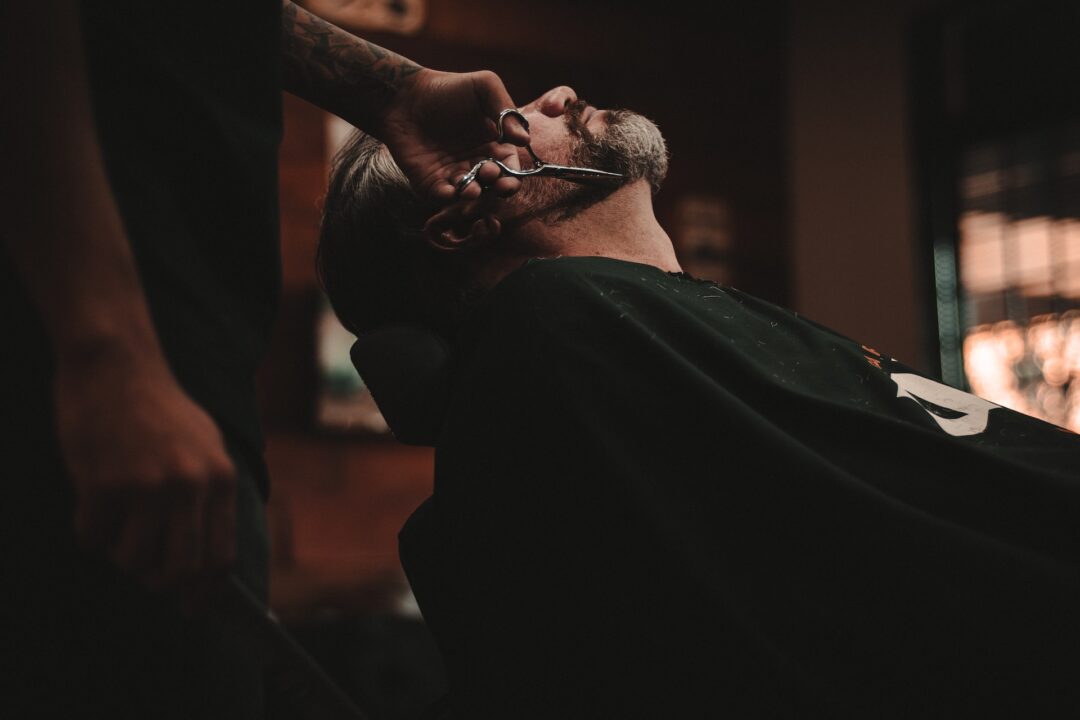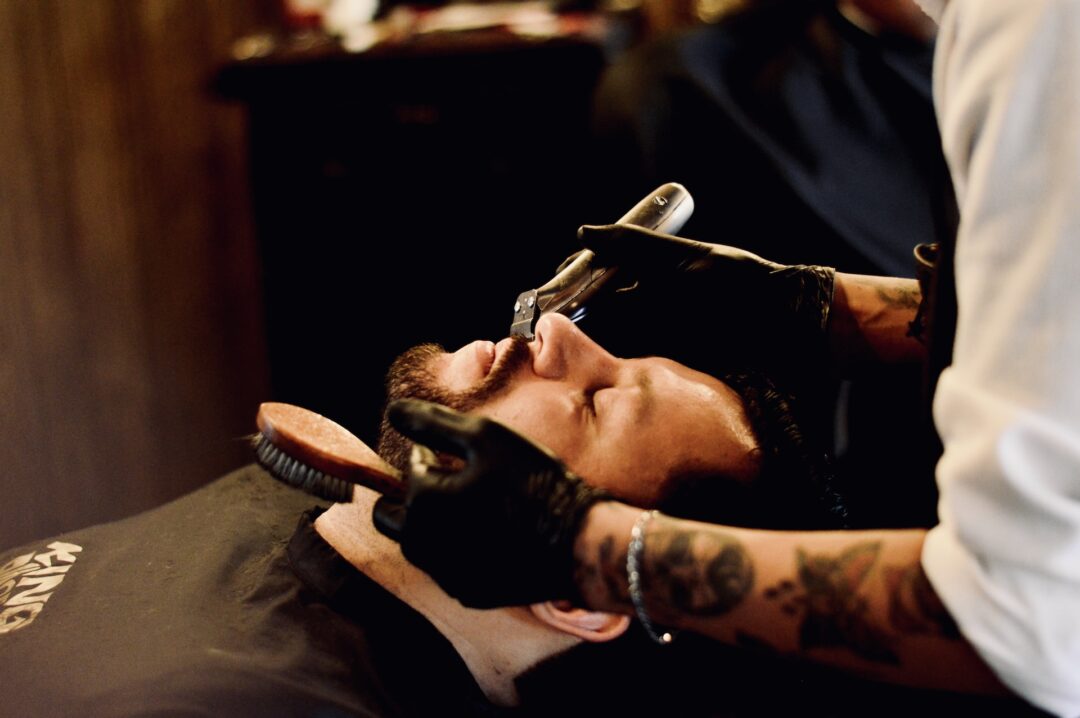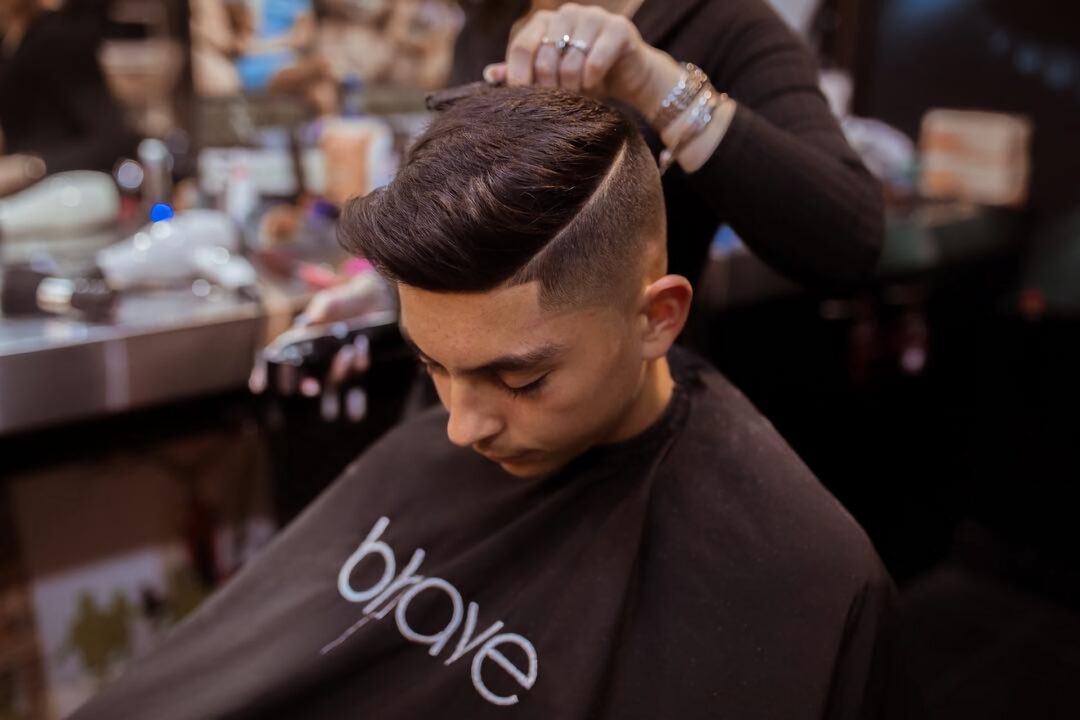You’ve probably heard of or experienced the infamous “beard itch” if you’ve ever grown a beard or thought about doing so. It’s not an urban legend that this annoying feeling has discouraged would-be beard growers. When new facial hairs appear, they frequently bring with them a prickly sensation that is equal parts annoyance and tickling. But what causes this itch, exactly? Is it the skin’s dryness, the new hair’s texture, or something else entirely? While it may be easier to reach for the razor, addressing the problem head-on requires first identifying its root causes. On top of that, the grooming industry today has many of options to help you feel better. Each and every one of your beard care needs may be met, from beard oils and balms to specialist shampoos. In this article, we’ll discuss proven methods for relieving beard-growing irritation so that you can enjoy a stress-free beard-growing experience.
Why Does Your Beard Itch?
Understanding the root cause can often be the key to finding a solution. Here are some reasons behind the itch:
New Growth
A period of discomfort marked by itching is commonly experienced at the beginning of your beard-growing journey. The growth characteristics of beard hairs are mostly responsible for this phenomena. Stiff and sometimes curling back, these hairs can be very irritating to the delicate skin of the face. People often refer to this early stage as “itchy beard stage.” To lessen this itch throughout the period of new growth:
- Soften the hairs and soothe the sensitive skin with a calming, moisturizing beard oil or balm;
- Regular bathing with a gentle beard shampoo will help keep your facial hair clean and free of itchiness.
Dry Skin
When your beard is long enough, it might begin to benefit from your skin’s own oils. Even while these oils are good for your beard, they may cause your skin to become dry and itchy. Effectively treating dry skin under your beard requires:
- To keep your face skin and beard from drying out, use a high-quality beard oil or balm on a regular basis;
- Maintaining the health of your beard and the skin underneath relies on regular usage of these items.
Dirt and Sweat
Beards are excellent at collecting dirt, sweat, and dead skin. Beard accumulation of these particles can cause skin irritation and inflammation. The following are measures that can be taken to protect against irritation caused by grime and perspiration:
- You should make it part of your routine to wash your beard using a gentle beard shampoo on a regular basis. The result will be a spotless environment free of clutter and dirt;
- To avoid an accumulation of dead skin cells, exfoliate the skin beneath the beard on a regular basis;
- To avoid further skin irritation, make sure to dry your beard completely after washing it.
Ingrown Hairs
Shaving can sometimes lead to hair growing back into the skin, resulting in the formation of painful and itchy ingrown hairs. To prevent and manage ingrown hairs effectively:
- Adhere to proper shaving techniques, including using a sharp razor, shaving in the direction of hair growth, and avoiding excessive pressure;
- Make exfoliation a regular practice to deter hair follicles from becoming trapped beneath the surface of the skin;
- In cases of existing ingrown hairs, refrain from picking or squeezing them, as this can exacerbate the issue. Instead, consider employing a sterile needle or consult a dermatologist for professional and safe extraction.
Tips on How to Make Your Beard Not Itch
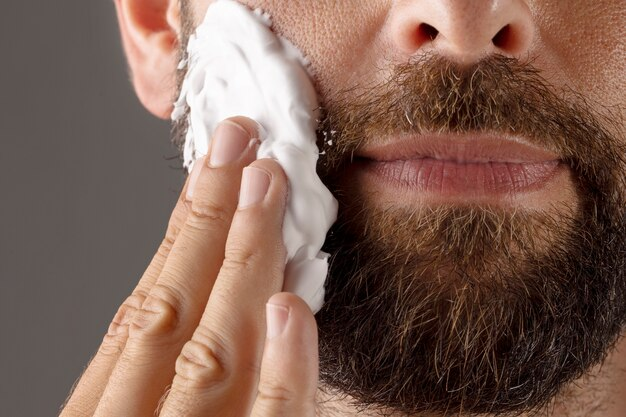
There are several tried-and-true methods to help you achieve a comfortable, itch-free beard. Let’s delve deeper into these methods and provide you with valuable insights on how to stop beard itch and maintain a healthy beard.
Wash Regularly, But Not Too Often
Proper beard hygiene is essential for preventing itchiness, but it’s crucial not to overdo it.
- Frequency: Aim to use a gentle beard shampoo 2-3 times a week. Frequent washing can strip away the natural oils that keep your skin and beard moisturized;
- Avoid Regular Shampoos: Steer clear of using regular hair shampoos on your beard. They often contain harsh chemicals that can lead to dryness and itching. Instead, opt for specialized beard shampoos designed to clean without causing irritation.
Moisturize Daily
Moisturization is a cornerstone of preventing beard itch and maintaining overall beard health.
- Beard Oils and Balms: These products are your best friends when it comes to stopping beard itch. They provide much-needed hydration to both your beard and the underlying skin, preventing dryness and itchiness;
- Natural Ingredients: Seek out products containing natural ingredients like jojoba oil, argan oil, and shea butter. These ingredients not only moisturize effectively but also nourish your facial hair and skin without clogging pores.
Brush and Comb Your Beard
Regularly grooming your beard through brushing and combing is a simple yet highly effective technique for an itch-free beard.
- Distribute Natural Oils: Brushing and combing help evenly distribute the natural oils produced by your skin. This natural conditioning prevents dryness and itching;
- Choose the Right Tools: Invest in high-quality beard brushes and combs to avoid hair and skin damage. The right tools make all the difference in maintaining a healthy and itch-free beard.
Trim Regularly
Maintaining a well-groomed beard not only enhances your appearance but also reduces the chances of beard itch and ingrown hairs.
- Trimming Tools: Ensure you use sharp, high-quality beard scissors or a trimmer for precise grooming. Regular trimming prevents split ends and unruly hair that can contribute to itching;
- Regularity: Establish a trimming routine to keep your beard looking neat and healthy. Consistency in grooming efforts goes a long way in minimizing discomfort.
Stay Hydrated
Proper hydration is not only crucial for your beard but also for the skin beneath it.
- Water Intake: Ensure you’re drinking enough water to maintain skin hydration from within. Dehydrated skin can become dry and prone to itching;
- Limit Alcohol and Caffeine: Excessive consumption of alcohol and caffeine can dehydrate your body, so moderate your intake to preserve skin moisture.
Adopt a Healthy Diet
Your dietary choices significantly impact the health of your beard and skin.
- Omega-3 Rich Foods: Integrate foods rich in Omega-3 fatty acids into your diet. Flaxseeds, fatty fish (e.g., salmon), and walnuts are excellent sources. These nutrients are known to promote healthy skin and hair;
- Vitamins and Antioxidants: Maintain a balanced diet with an abundance of fruits and vegetables. These foods provide essential vitamins and antioxidants that contribute to skin and hair health.
How to Get Rid of Beard Itch
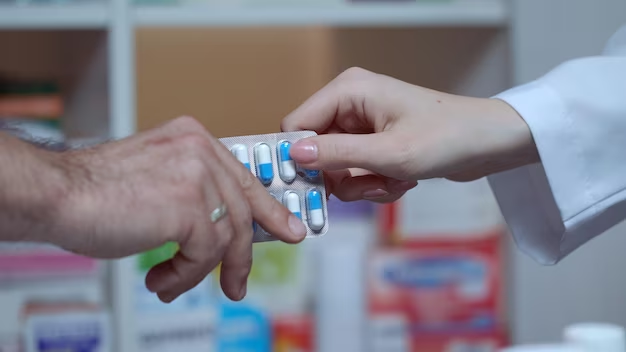
If you’re already experiencing beard itch, you’ll be glad to know that there are effective ways to alleviate the discomfort. In this guide, we will discuss three key strategies to get rid of beard itch: using a hydrocortisone cream, taking antihistamines, and applying warm compresses.
Use a Hydrocortisone Cream
A hydrocortisone cream can be a helpful over-the-counter remedy for reducing itching and inflammation associated with beard itch. Here’s how to use it effectively:
- Select the Right Product: Choose a hydrocortisone cream with a low concentration (typically 0.5% to 1%) as higher concentrations may be too potent for the face;
- Apply Sparingly: Only apply a thin layer of the cream to the itchy areas of your beard. Avoid using excessive amounts, as this can lead to skin thinning;
- Frequency: Apply the cream once or twice a day, depending on the severity of the itch. Follow the instructions on the product label;
- Consult a Dermatologist: If the itch persists or worsens despite using hydrocortisone cream, consult a dermatologist for a professional evaluation and further guidance.
Take an Antihistamine
Antihistamines are medications commonly used to relieve allergy symptoms, but they can also help reduce itching caused by beard itch. Non-drowsy antihistamines are preferable to avoid drowsiness during the day. Here’s how to use them:
- Select the Right Antihistamine: Choose a non-drowsy antihistamine that contains ingredients like loratadine (Claritin), cetirizine (Zyrtec), or fexofenadine (Allegra);
- Follow Dosage Instructions: Take the antihistamine according to the recommended dosage on the product label or as directed by a healthcare professional;
- Consistency is Key: To maintain the effects, take the antihistamine consistently as prescribed or as needed to manage the itch;
- Consult a Doctor: If you have concerns about using antihistamines, or if your beard itch persists despite their use, consult a healthcare provider for personalized advice.
Apply a Warm Compress
A warm compress can provide quick relief from beard itch by soothing irritated skin and promoting blood circulation. Here’s how to create and use a warm compress:
- Prepare a Warm Towel: Soak a clean, soft towel in warm (not hot) water. Wring out excess water to avoid dripping;
- Application: Gently place the warm towel on the itchy beard area. Ensure that it covers the affected area completely;
- Hold in Place: Keep the towel in place for 3-5 minutes, allowing the warmth to penetrate the skin;
- Repeat as Needed: You can repeat this process as often as necessary to relieve itching and discomfort;
- Pat Dry: After using the warm compress, pat your beard area dry with a clean towel.
How Long Does Beard Itch Last?
Newcomers to the world of beard cultivation often wonder, “How long does beard itch last?” To provide a more comprehensive understanding of this phenomenon, let’s break down the typical duration of beard itch into finer increments.
Week 1-2: The Itchy Inception
The journey into beard growth typically commences with the first signs of itchiness appearing within the initial week of facial hair development. It’s important to note that this period varies from person to person, but the itch often becomes most pronounced around the second week. This phase is often the most challenging for new growers, as the itchiness can be rather intense and irritating.
During this stage, it’s crucial to resist the urge to scratch vigorously, as excessive scratching can lead to skin irritation and even ingrown hairs. Instead, focus on implementing a well-rounded beard care routine, which includes regular washing with a mild beard shampoo, moisturizing with a beard oil or balm, and gentle combing or brushing to stimulate hair growth.
Week 2-3: Gradual Relief
As you progress into the third week of beard growth, you’ll likely notice a gradual reduction in the intensity of itchiness. This reduction is often a welcome relief for individuals who have been enduring the discomfort of the previous weeks. Proper care and maintenance play a pivotal role in making this reduction more noticeable and manageable.
Ensure that you continue to cleanse your beard regularly to prevent the accumulation of dirt and bacteria, which can exacerbate itchiness. Moreover, moisturizing becomes even more critical during this phase, as hydrated facial hair and skin are less prone to itchiness and irritation.
Beyond Week 3: The Subsiding Itch
Once you’ve crossed the three-week mark, you’ll find that beard itch tends to subside significantly for most individuals. At this stage, the discomfort is often minimal, and managing the itch becomes considerably easier. Your skin and facial hair will gradually adapt to the new growth, leading to a more comfortable beard-growing experience.
However, it’s important to note that individual experiences may vary. Factors such as hair type, skin sensitivity, and grooming practices can all influence the exact duration and intensity of beard itch. Therefore, maintaining a consistent and attentive beard care routine remains crucial throughout your journey.
Conclusion
The journey of growing a beard comes with its challenges, and itchiness is one of them. Dryness, dirt, and inadequate grooming can exacerbate this discomfort. However, with the right knowledge and tools at your disposal, such as quality beard oils, balms, and a gentle brush, you can navigate the itchy phase with ease. Remember, when you’re wondering how to stop beard itch or how to make your beard not itch, consistency in care is key. Regularly cleansing, moisturizing, and combing can make a world of difference. Your beard is a reflection of your patience and commitment, so give it the love it deserves, ensuring it remains healthy, vibrant, and itch-free.
FAQs
How to stop beard itch during the initial growing phase?
Moisturize daily, avoid touching your beard frequently, and resist the urge to shave. This phase is temporary, and with proper care, the itchiness will subside.
How to get rid of beard itch if I’ve been growing my beard for months?
A persistent itch may be a sign of underlying dryness or a skin condition. Regularly moisturizing, washing with a beard shampoo, and even consulting a dermatologist can help.
Are there any natural remedies on how to get rid of beard itch?
Absolutely! Aloe Vera gel, coconut oil, and tea tree oil have natural soothing properties. However, always do a patch test before applying anything new to your face.
How to make your beard not itch during winter when the air is dry?
Increase the frequency of moisturizing, use a humidifier indoors, and protect your beard from harsh winds using a scarf.

